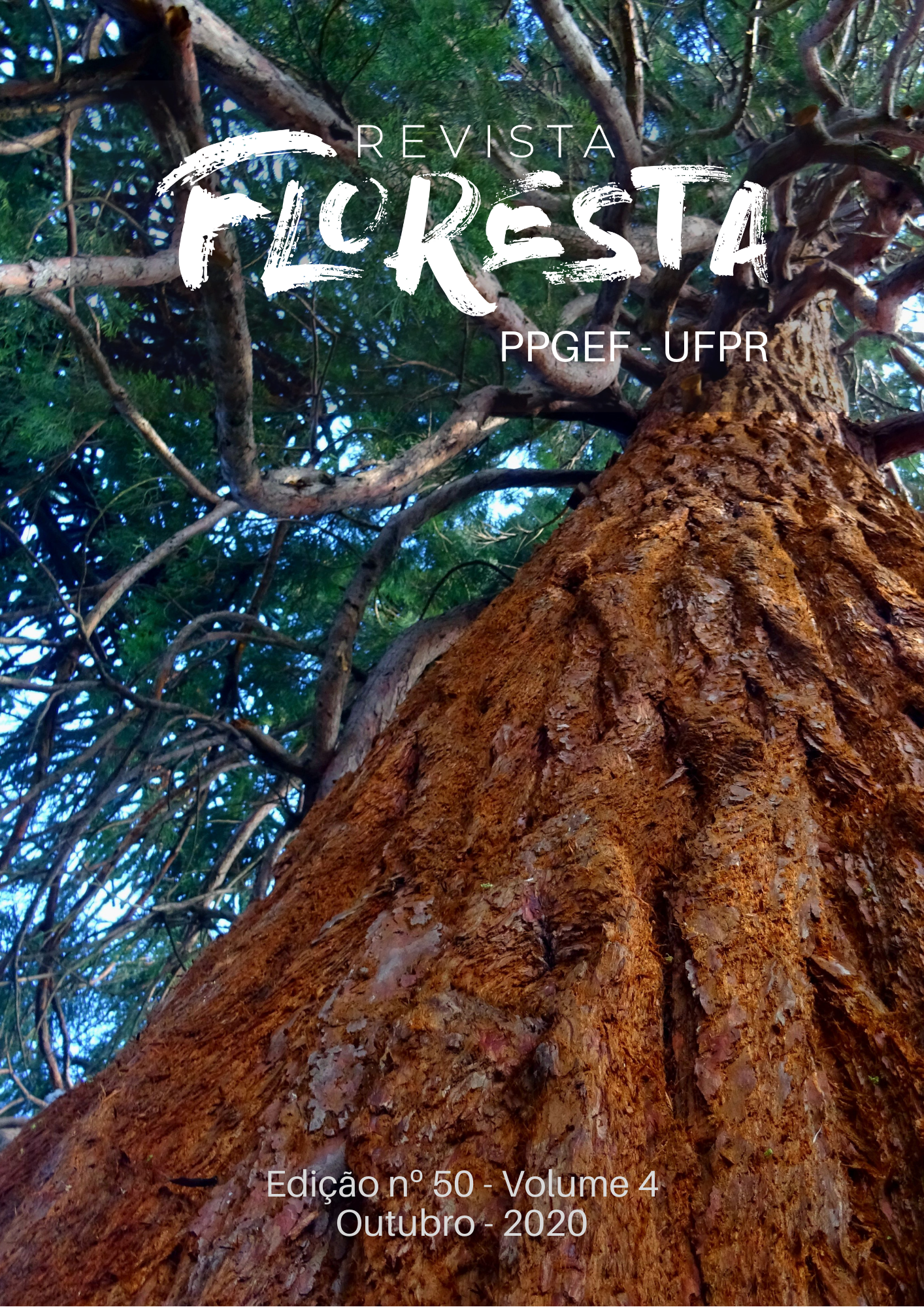PATTERNS OF SEED DISPERSAL SYNDROMES AT DIFFERENT ALTITUDES IN THE SEMIARID REGION
DOI:
https://doi.org/10.5380/rf.v50i4.64832Palavras-chave:
Dry forest, Caatinga, AutoecologyResumo
The objective of this study was to assess the patterns of seed dispersal syndromes of woody plants from nine forest fragments distributed at different altitude levels on the Araripe plateau, in Pernambuco, Brazil. For data collection, we divided the altitudes within the region into three categories: lower level (altitudes ≤600 m); intermediate level (600< altitudes <750 m); and higher level (altitudes ≥750 m). We registered nine fragments, three per altitude level. In each of them, we distributed 20 rectangular sampling units with 250 m², totaling a sampling area of 4.5 ha. We quantified, collected, and identified woody plants with a diameter at breast height higher than or equal to 0.1 m (DBH 1.30 m ≥0.10 m). We characterized the dispersal syndrome according to the characteristics of the fruits and seeds and based on a literature review. In the whole region, we sampled 6,987 individuals, distributed in 35 families, 82 genera, and 153 species. Approximately 41% of all individuals are dispersed by animals, 37% by the plant’s own mechanisms, and 21% by the wind. In terms of dispersal, 47% of species were classified as zoochorous, 23% as autochorous, and 14% as anemochorous. Seed dispersal patterns vary according to altitude levels, with higher regions tending to present greater representativeness of biotic dispersers and lower ones, abiotic.
Downloads
Publicado
Como Citar
Edição
Seção
Licença
Direitos Autorais para artigos publicados nesta revista são do autor, com direitos de primeira publicação para a revista. Em virtude da aparecerem nesta revista de acesso público, os artigos são de uso gratuito, com atribuições próprias, em aplicações educacionais e não-comerciais.A revista, seguindo a recomendações do movimento Acesso Aberto, proporciona acesso publico a todo o seu conteudo, seguindo o principio de que tornar gratuito o acesso a pesquisas gera um maior intrcambio global de conhecimento.
Conteúdos do periódico licenciados sob uma CC BY-NC-SA 4.0



